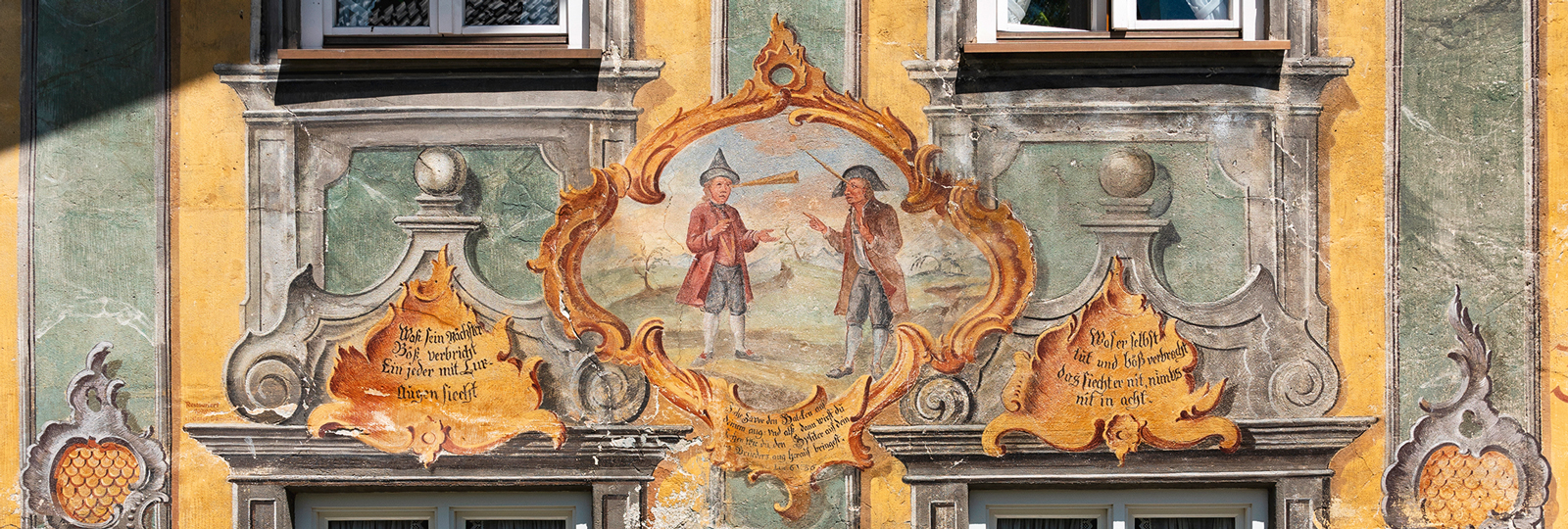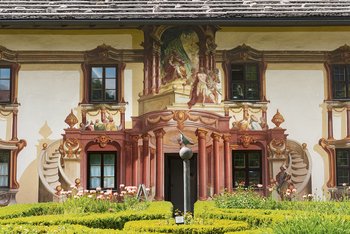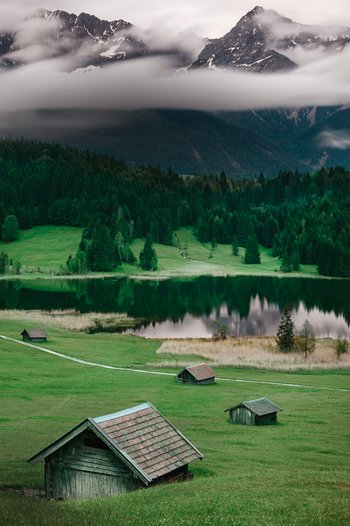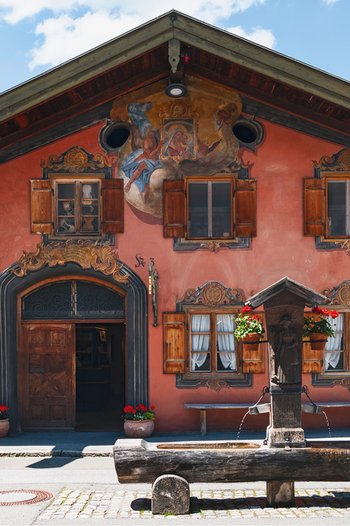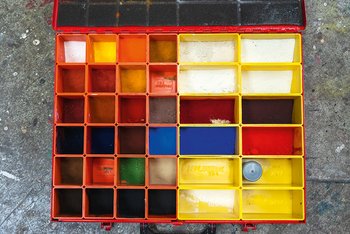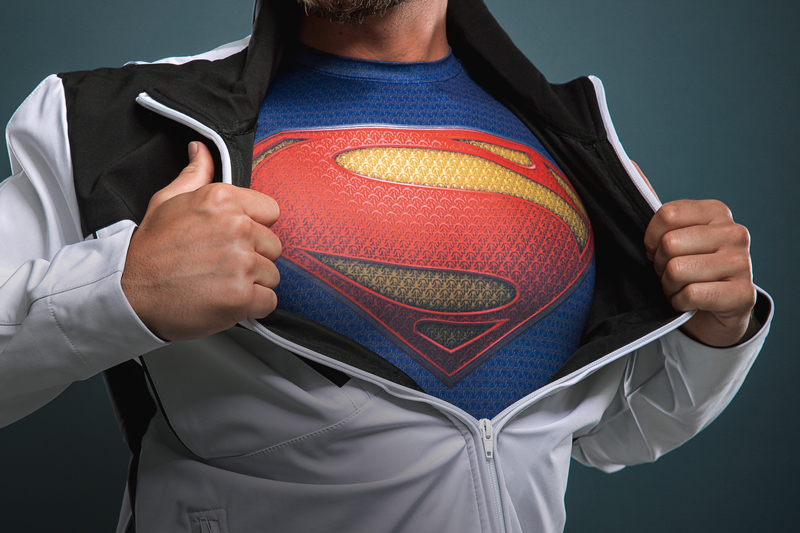Living picture books
Photos: istock (Angelika Jakob)
This article appeared in MarktImpulse 3/19
Order the printed version via email at: kontakt@brillux.de
Magnificent ‘Lüftlmalereien’ (ornate, hand-painted mural artworks) from the 18th century adorn the facades of houses in the Upper Bavarian villages of Mittenwald and Oberammergau. To keep it that way, true craftsmanship is required.
In the middle of the peaceful village of Oberammergau, a drama is playing out. Soldiers are scurrying over stairways, Jesus is being judged by Pilatus, men wearing turbans gesticulate wildly, and someone else flies through the air. Here, on the facade of the ‘Pilatus House’ in 1784, Franz Seraph Zwinck shows off all the facets of his art. He plays with perspectives, constructs false columns – and transforms the architecturally simple building into a turbulent, populated stage. After all, the roses, phlox and boxwood hedges in front of the house are certainly real.
Even in ancient times, rich merchants garnished their homes with figures, decorative elements, and illusionary architecture. Inspiration came from Italy to Upper Bavaria, where the cities were colorful image spaces from the beginning of the Renaissance period to the late Baroque era. At the start of the 18th century, the rural communities in the Karwendel area lay on a vital trade route between Venice to Augsburg, known as the “Rottstrasse”.
The villages of Mittenwald and Oberammergau served as central goods handling and stacking positions. Local traders, farmers, and craftsmen prospered. Education and an openness to the world grew in the villages. Traders told of the fantastic wall paintings they had seen in larger towns. ‘Lüftlmalerei’ originated in the Werdenfelser Land in Upper Bavaria and continues to Tirol.
Franz Karner (1738–1817) in Mittenwald and Franz Seraph Zwinck (1748–1792) in Oberammergau grew up together, as two gifted craftsmen and artists in the area.
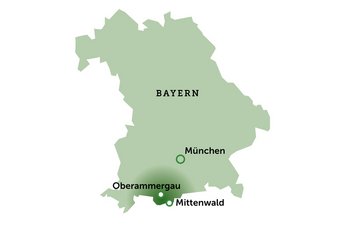
A double dose of Lüftl art
As an apprentice, Zwinck spent a good deal of time in the Ettal abbey. He was able to assist with preparing the pigmented paints for Tirolean fresco painter Martin Knoller while he worked in the basilica. The influence of such a famous master painter is clear in Zwinck’s facade art.
Nevertheless, he went on to develop his own style and influenced the look around his home town in such a way that the regional facade of his home “"Beim Lüftl” was posthumously designated as Lüftlmalerei.
He graced the stocky farmhouses of his home town with princely pillars, stairs, and canopies. But scenes from the Passion of Christ, figures of Mary and saints adorn whole streets in the villages of Oberammergau and Mittenwald.
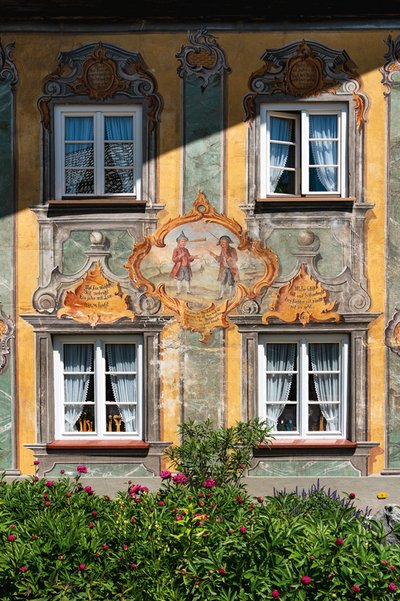
Without the “Rottstrasse” it is likely that facade painting would never have reached this region. “The first nouveau riche were happy to spend their money on enhancing the beauty of their homes. These days, people tend to invest in home technology and luxury goods.
Michael Ertl, master painter and restorer from Garmisch, one of the few craftspeople still talented enough to tackle the Lüftlmalerei painting style.
The “flight into Egypt” is also a popular theme, something that Zwinck’s fellow artist Karner painted on multiple occasions. The popularity of this scene is probably explained through its proximity to the reality of life of the tradespeople, who, like the Holy family, often left their home and had to travel to distant destinations. Horses and carts, hunting, and sundials were some of the everyday items and scenes that also graced the buildings.
While Zwinck placed his mock architecture across entire facades, Karner preferred to stick to the surface. In 1786, after traveling through the Alps, Johann Wolfgang von Goethe referred to Mittenwald as a “living picture book”.
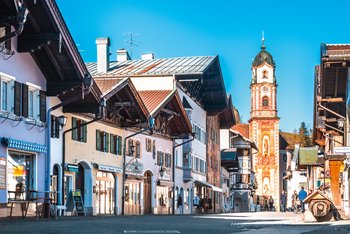
Not for beginners
Lüftlmalerei is otherwise known as fresco painting. Colored pigments dissolved in water are applied to a two millimeter thick, still-damp layer of lime plaster. While the water evaporates, the lime begins to react with carbon dioxide in the air to form calcium carbonate, and the colored pigments are bound to the lime.
This results in a rock-hard, water-insoluble sintered layer, whose shine still fascinates even now. This fresco-buono painting technique is not for beginners, however. The painter must work rapidly, while the plaster is still wet, and can make no changes once the work is complete.
Drafts on cardboard allowed for a little more certainty. Before the artist picked up a brush, first of all they transferred their works onto the wall with a sharp stylus.
The unobtrusive yet bright colors of the frescoes can be attributed to the countless color crystals contained in the old pigmented paints. The changing incidence of light gives the images depth. The mineral paints are astonishingly resistant to weathering.
They have been exposed to wind, rain, sun, and widely fluctuating temperatures for over 200 years now. Fortunately, there are still many unchanged or carefully restored originals. Many of the Baroque works of art have however been lost – professional restoration is expensive and time-consuming.
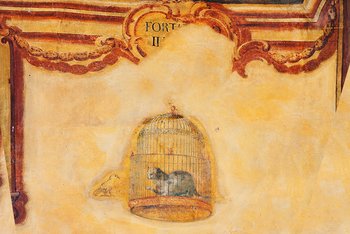
Regard and restore
Michael Ertl took on the Lüftlmalen painting work himself. There is no official training for this. “It takes courage, certainty, and zest,” he says of the most important prerequisites for Baroque facade painting.
“The stroke has to flow; I can never falter.” Ertl gestures a flourish into the air. “And in no case must I be too precise. The pictures are loosely dotted on. Eyes, for example, are only painted on as small black chunks in the middle of faces.
From a distance, this appears precise, but the charm lies within its slightly improvised nature. For false marble I do irregular lines on the base color shade. Up close, that looks almost sloppy. But from a few meters back, it looks almost like the real thing.”
But Ertl doesn’t turn to the old fresco techniques anymore. “It’s no longer affordable to do it that way,” he laments. “I paint on dry plaster, so I have a little more time and am not so dependent on the weather. Unfortunately, the images don’t last as long as those that were painted on the damp underlayers.”
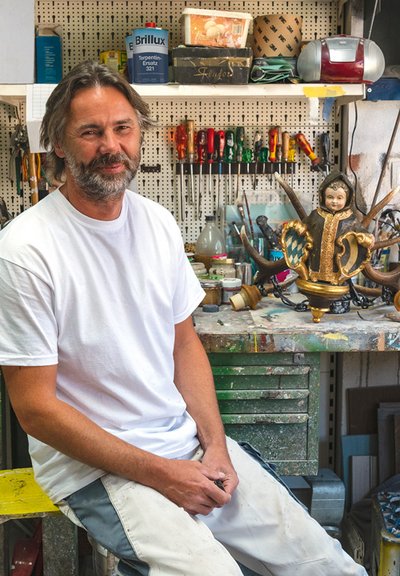
Malerei Vergolderei Ertl
The painting and gilding firm Ertl has been running in Garmisch-Partenkirchen for over 60 years and enjoys an excellent reputation.
Gilded, retouched, and restored Owner Michael Ertl, 52, protected art works. He attended the master school for church painters and gilders in Munich and is a certified restorer.
www.malerei-ertl.de
www.facebook.com/Malerei-Vergolderei-Ertl
A successful restoration involves high demands. As in earlier times, Michael Ertl still mixes his own paints on site. He always has his metal case with him, carrying the 36 most important historical pigments.
A great deal of experience is necessary to determine how much to lighten the tones during the tones during the drying process. And nuances are crucial, he has to match the colorfulness of the old frescoes precisely.
“We’re happy when we repair a historical fresco properly,” says the master painter. “It is a real shame if homeowners paint over these valuable murals or try to mend them using the wrong techniques.”
At the end of the day, it’s not just about showing off. The old facade images also show what was important in life to people then, what made them happy and what they feared. And what they could not know was that, even today, the beauty of their facades would continue to delight visitors and locals.
